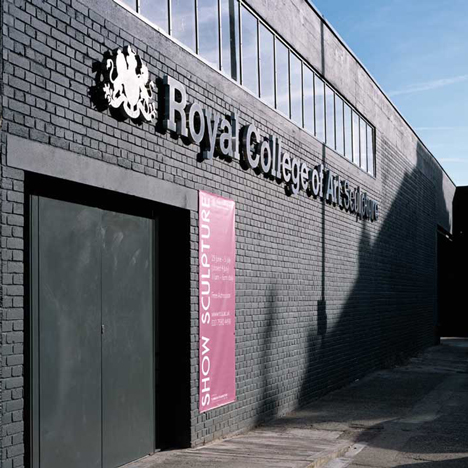The RCA is set to expand with another new campus near its existing buildings in Battersea, after the UK government pledged to contribute funding for the project in its autumn spending statement.
The London design school's 15,000-square-metre centre in Battersea will host a range of new courses focusing on the crossover between design, science and technology.
New programmes at the campus will focus on robotics, wearable technology, smart materials and city design. It will also house a number of startup businesses as part of the school's InnovationRCA incubator programme, which aims to help graduates become entrepreneurs.
The school's existing Fashion and Textiles departments will also move from Kensington, completing plans outlined in 2011 to move the RCA's School of Materials to Battersea.
The facility will provide space for 1,500 students and startup staff. It will occupy a former industrial site close to the school's recently completed Woo Building, the Dyson Building and Clore Innovation Centre, and the Sackler fine arts building, all designed by London architecture firm Haworth Tompkins.
An architect has yet to be appointed for the new project, which could either be one large building or a cluster of smaller structures.
The government has earmarked £150 million for the campus' development and for the creation of new storage space for the V&A museum, which has a historic connection with the school. It is not yet clear how much of this fund will be allocated to the RCA.
"This is excellent news for the RCA, for London and for Britain's creative industries," said RCA rector Paul Thompson.
"The new campus will create a flagship centre for design and innovation boosting UK creative industries. Today's announcement is an investment in Britain – the design economy is worth £71.7 billion to the UK and the RCA is a vital contributor to British design and creative arts."
RCA's existing campus in Kensington will continue to operate, hosting the school's joint Master's programmes with the nearby V&A and Imperial College, a university specialising in science.
The building and the expansion of InnovationRCA will form a key part of the school's 2021 strategy, which focuses on the fact that 45 per cent of RCA graduates go on to start their own business or work for themselves.
According to the school, InnovationRCA has already fostered 26 startups including businesses like ROLI, whose Seaboard keyboard was one of the London Design Museum's Designs of the Year in 2014.
Its current five-year strategic plan runs up until 2016, and has included growing the number of courses and students at the school.
Despite being named as the world's top design school in May, the RCA had a bumpy year, with a spate of high-profile staff resignations and reshuffles.
In March, Anthony Dunne quit as head of the influential Design Interactions course, and his partner Fiona Raby also stepped down from her teaching role.
Later that month, Ab Rogers stepped down as head of interior design and Clare Johnston retired as head of Textiles. Alex de Rijke resigned as dean of Architecture in July.
In September it was revealed that the school was suspending its Design Interactions course due to further staff departures. Thompson later apologised for comments about former staff and defended the school's financial position.

